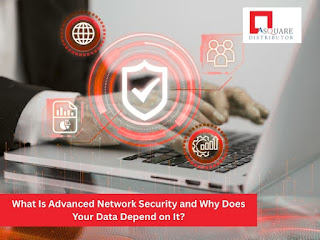Choosing the Right Networking Solution for Your Business Needs
In the digital age, your business’s success heavily relies on the strength of its network infrastructure. From internal communications and data transfers to customer interactions and cloud applications, your networking solution plays a vital role in ensuring efficiency, speed, and security across all operations. But with so many options available, how do you choose the right one?
Let’s break it down.
Why the Right Networking Solution Matters
A poorly designed network can slow down operations, cause frequent downtime, and expose sensitive data to security threats. On the other hand, a well-structured network improves collaboration, streamlines processes, and supports your growth.
Key benefits of choosing the right solution include:
-
Improved performance: Faster access to resources and cloud-based tools.
-
Enhanced security: Built-in firewalls, VPNs, and secure access points protect your data.
-
Scalability: Easily adapt to future growth without starting from scratch.
-
Cost efficiency: Avoid paying for features or capacity you don’t need.
Step-by-Step Guide to Choosing the Right Network
1. Assess Your Business Needs
Start by understanding your current operations and future plans. Ask yourself:
-
How many employees use the network daily?
-
Do your teams access heavy files, host video calls, or use cloud apps?
-
Do you have remote workers or multiple office locations?
This information will help you determine bandwidth requirements, hardware capacity, and connection types.
2. Choose Between Wired, Wireless, or Hybrid
Each network type has its own pros and cons:
-
Wired networks (Ethernet) offer high stability, faster speeds, and increased security. Ideal for companies with heavy data usage or sensitive information.
-
Wireless networks provide flexibility and mobility. They're great for open workspaces, temporary setups, or businesses that value employee mobility.
-
Hybrid networks combine both, offering the reliability of wired systems and the convenience of wireless access.
3. Prioritize Security Features
In an era of growing cyber threats, a secure networking solution is non-negotiable. Look for:
-
Firewalls and intrusion detection systems
-
Encrypted VPNs for remote access
-
Access control protocols
-
Regular firmware and software updates
If you handle customer data, financial information, or proprietary content, these protections are essential.
Networking Hardware to Consider
The right solution goes beyond just cables and routers. Key components include:
-
Routers and Switches: Direct traffic and manage internal communication.
-
Access Points: Extend wireless coverage, especially in large or multi-level buildings.
-
Firewalls: Protect your network from external threats.
-
Network Storage (NAS): Secure file sharing and backups.
Consider equipment that supports the latest standards (like Wi-Fi 6 and gigabit Ethernet) for speed and future readiness.
Don’t Forget Scalability
A network that works today may fall short as your team grows or your services expand. Choose a solution that allows you to:
-
Add users or devices without lag.
-
Upgrade storage or bandwidth easily.
-
Integrate with cloud platforms or remote tools
Scalability ensures long-term efficiency and avoids costly overhauls.
Professional Support vs. DIY Setup
Setting up a business network requires expertise. Many companies opt for professional IT support or managed network service providers to handle:
-
Installation and configuration
-
Security audits
-
Ongoing maintenance and monitoring
This reduces downtime and ensures your setup meets industry standards.
Final Thoughts
Choosing the right networking solution is more than a technical decision—it’s a strategic investment. It directly impacts how your business communicates, collaborates, and grows. By carefully assessing your needs and planning for the future, you can build a network that supports not just today’s demands but tomorrow’s ambitions.




Comments
Post a Comment